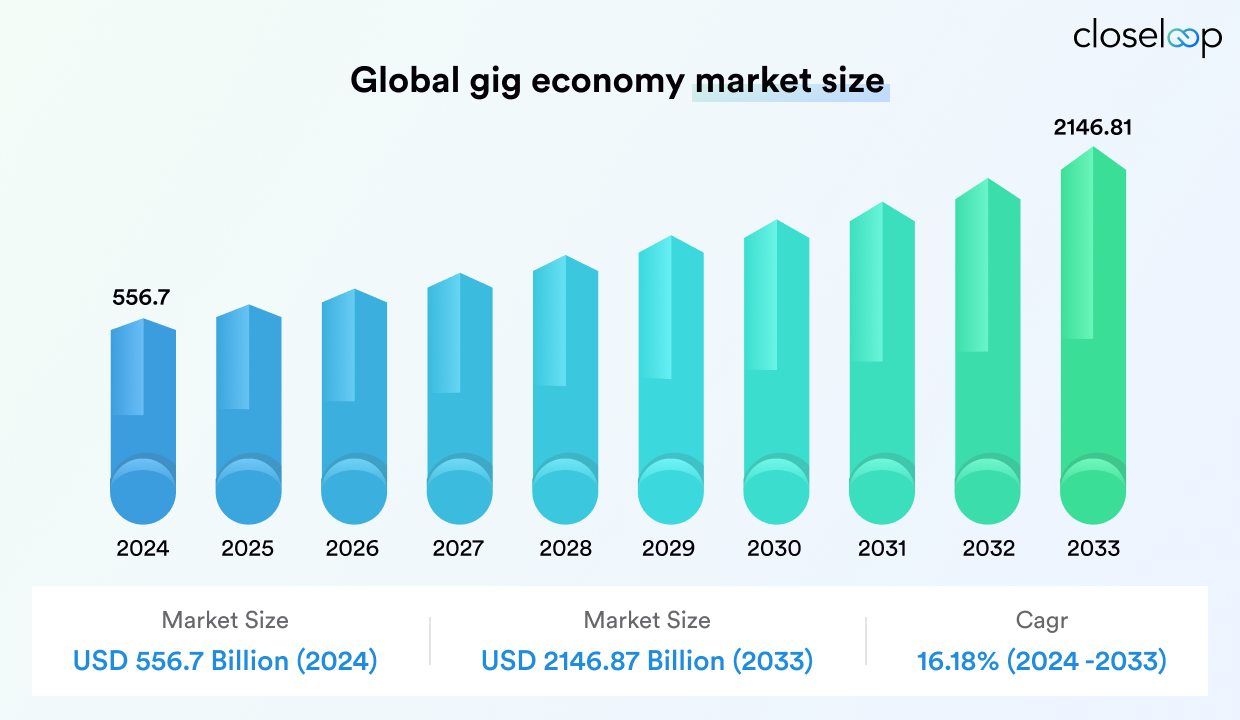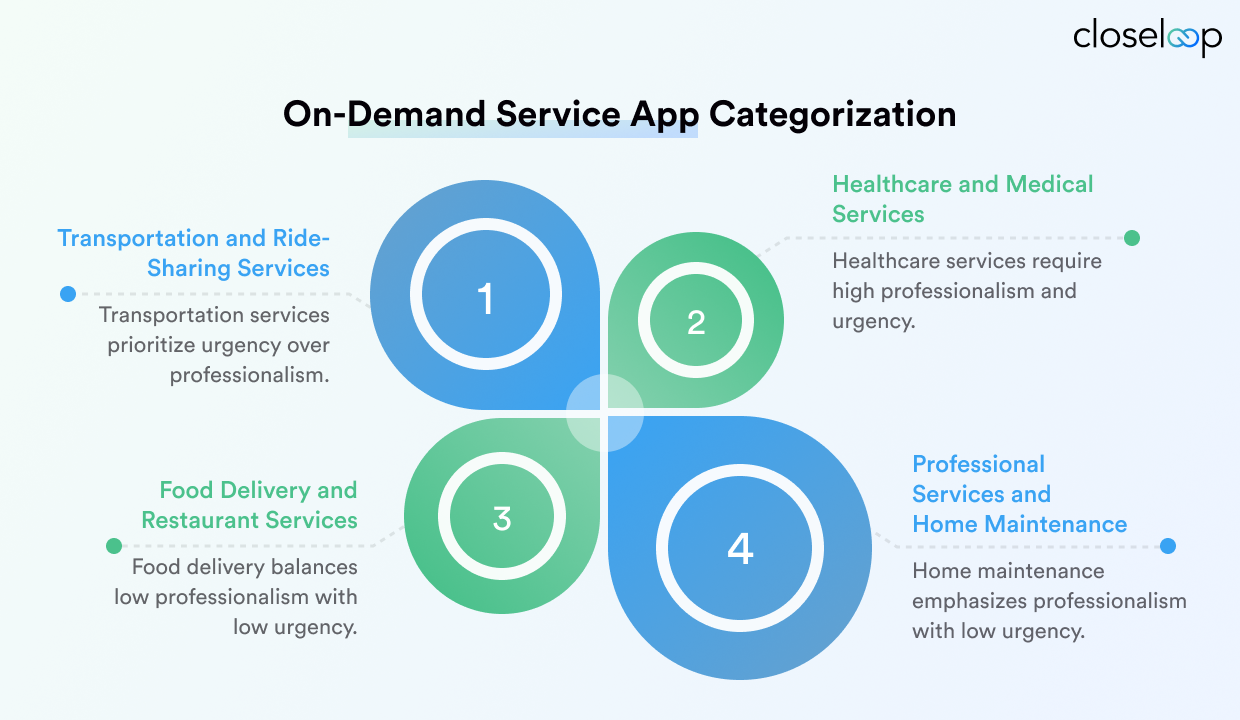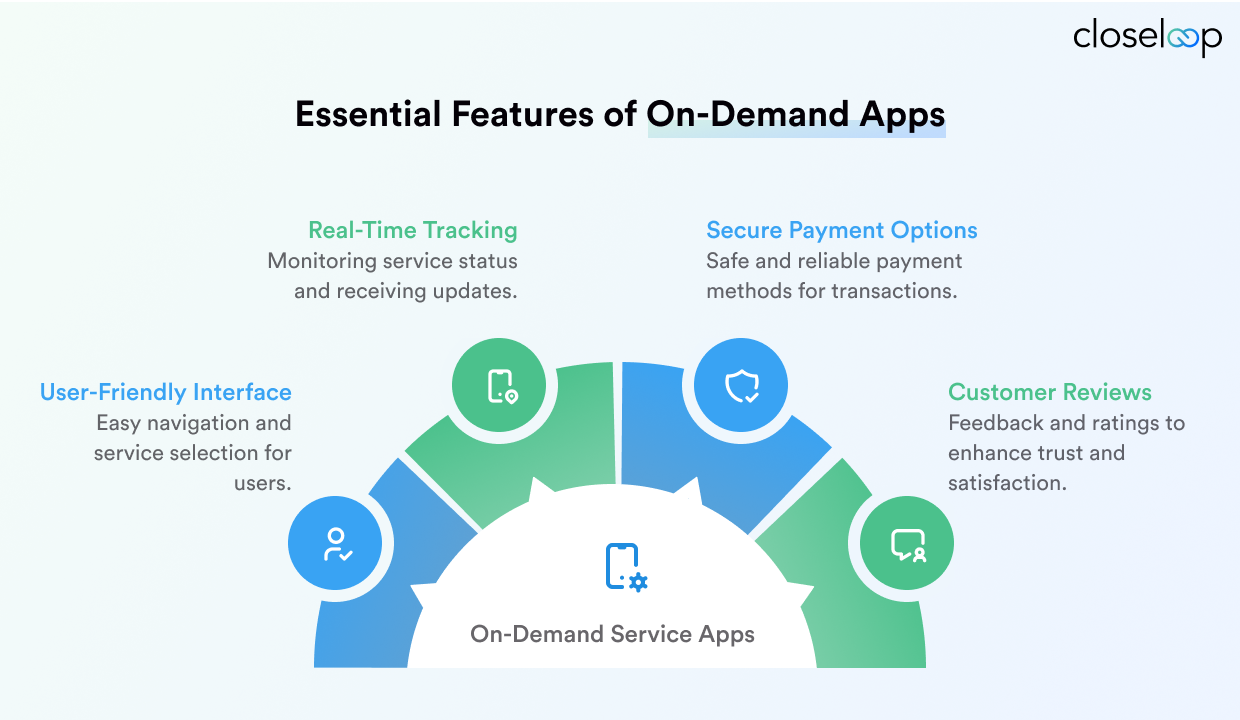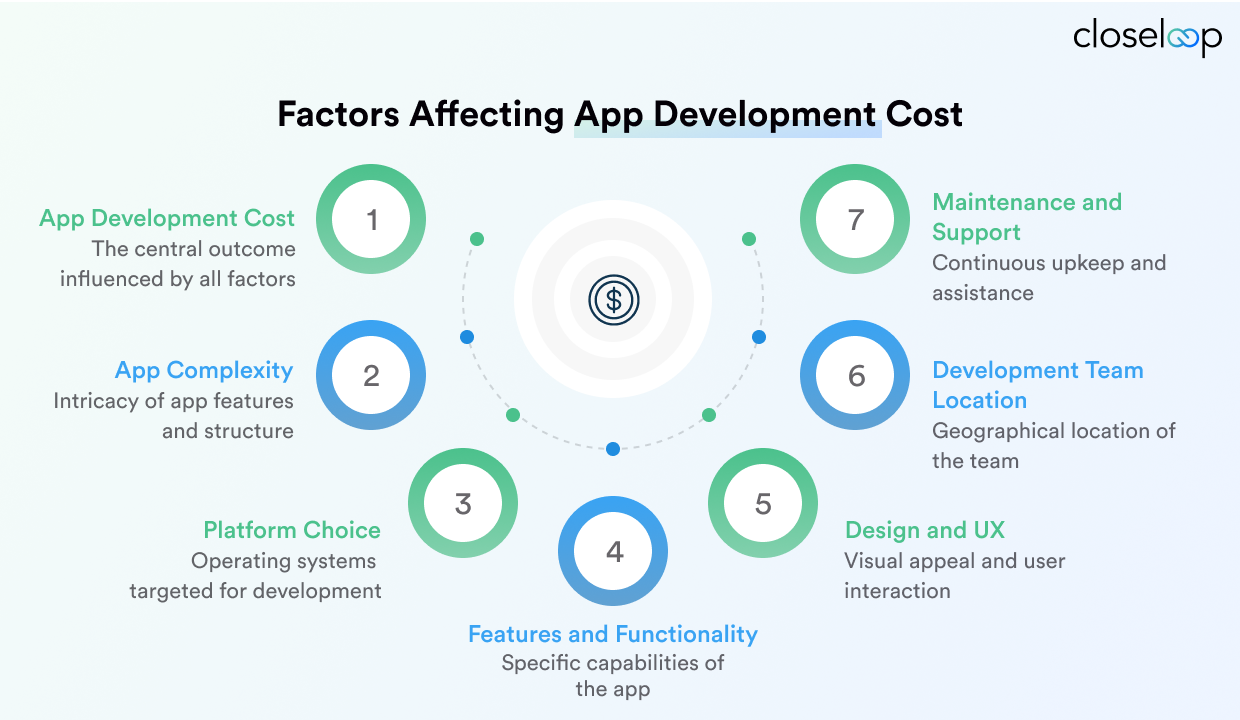The on-demand economy is reshaping how businesses operate and consumers access services. From ordering food to booking rides, requesting home repairs to hiring freelancers, on-demand apps have become the backbone of modern convenience. As we move toward an increasingly connected future, businesses that fail to adapt to this shift risk being left behind.
Whether you're a startup entrepreneur with a groundbreaking service idea or an established business looking to digitize your operations, understanding on-demand app development costs is crucial for making informed decisions. The investment ranges from modest beginnings to enterprise-level deployments, but the potential returns can be transformative.
This comprehensive guide will navigate you through the intricate landscape of on-demand service app development costs, covering various service models, industry-specific applications, essential features, detailed cost breakdowns, influencing factors, and hidden expenses that could impact your budget.
The On-Demand Revolution: By the Numbers
On-demand apps are profoundly reshaping industries, and market statistics underscore the significant growth opportunities for new businesses. Here are some numbers to prove the same:
Market Size That Demands Attention
1. PwC research anticipates the global on-demand economy to surge to US$335 billion by the end of 2025, demonstrating unprecedented market expansion. Meanwhile, the global on-demand delivery market alone is projected to grow from USD 16,251.2 million in 2024 to USD 21,821.04 million by 2031, maintaining a steady CAGR of 4.30%.
2. The gig economy, which powers many on-demand services, tells an even more remarkable story. Valued at USD 556.7 billion in 2024, this market is expected to explode to USD 2,146.87 billion by 2033—nearly quadrupling in size with a CAGR of 16.18%. These numbers reflect not just market growth, but a fundamental shift in how people work and consume services.

Over 80% of smartphone users worldwide have at least one on-demand app installed. Your potential customers aren't just familiar with this technology - they're already dependent on it for daily tasks
Industry Breakdowns Show Massive Opportunities
Food delivery alone is racing toward $365 billion by 2030. Telemedicine is exploding even faster at 32% annual growth, driven by post-pandemic behavior changes that aren't reversing. Transportation services like Uber and Lyft will hit $285 billion by 2030.
These aren't niche markets anymore. They are fundamental shifts in how people access services, creating opportunities for specialized players in every vertical imaginable.
Geographic Goldmines
The U.S. leads adoption with 28% of consumers using on-demand apps weekly, but emerging markets tell the real story. India and Brazil are seeing 30%+ annual growth rates as smartphone penetration accelerates and middle classes expand.
This geographic spread means you're not competing for scraps in oversaturated markets. Emerging economies offer massive untapped potential for businesses willing to adapt their models to local needs and preferences.
Types of On-Demand Service Apps
On-demand service applications operate through distinct business models, each catering to different market segments and user requirements. Here are some common types of on-demand service apps.
Business-to-Consumer (B2C) Model
Companies serve customers directly through their own branded platforms, controlling everything from pricing to delivery. These apps focus on consistent user experiences and brand loyalty. Businesses handle inventory, customer service, and quality control internally. Development costs are moderate since you're building for one company's needs, but require robust backend systems for inventory management and customer data.
Netflix - Streaming entertainment with AI-powered recommendations
Amazon Prime - Everything delivery with same-day options
Domino's - Pizza ordering with GPS delivery tracking
Spotify - Music streaming with personalized playlists
Business-to-Business (B2B) Model
Enterprise-focused platforms solve complex business workflows and processes. These apps handle bigger transactions, longer sales cycles, and multiple stakeholders. Security, compliance, and integration capabilities are paramount. Development costs run higher due to enterprise-grade features like advanced permissions, audit trails, and custom integrations. B2B apps typically generate higher revenue per user but require longer development timelines.
Slack - Team communication with enterprise security features
Salesforce - Customer relationship management for sales teams
Microsoft 365 - Complete productivity suite with collaboration tools
UpWork for Business - Corporate talent marketplace with procurement workflows
Peer-to-Peer (P2P) Model
Platforms connecting individual service providers directly with customers, acting as digital matchmakers. The app doesn't provide services but facilitates connections, payments, and trust-building between strangers. Technical complexity lies in verification systems, dynamic pricing, and dispute resolution. These platforms scale rapidly once network effects kick in, but require substantial initial investment in safety features and quality control mechanisms.
Uber - Ride-sharing with real-time driver-passenger matching
Airbnb - Home rentals with verified hosts and guests
TaskRabbit - Local services marketplace for handyman tasks
Fiverr - Freelance skills marketplace with project management tools
Each model serves different market needs and requires distinct technical approaches. B2C apps excel at brand control and customer experience consistency. B2B platforms handle complex enterprise requirements but demand higher development investments. P2P models create powerful network effects but need sophisticated trust and safety systems to succeed in competitive markets.
On-Demand Service Apps Divided By Industries
The on-demand service industry spans multiple sectors, each with unique requirements and development considerations. Understanding industry-specific needs is essential for accurate cost estimation and successful app development.

Food Delivery and Restaurant Services
Food delivery is a mature segment of the on-demand economy. In 2025, the U.S. online food delivery sector is projected to reach $401.3 billion with a 10.39% annual growth rate. These applications require complex logistics management, real-time order tracking, integration with restaurant point-of-sale systems, and sophisticated delivery routing algorithms.
Key features for on-demand food app development solutions include menu management systems, real-time inventory synchronization, order customization capabilities, payment processing, delivery tracking, and customer rating systems. Popular examples include DoorDash, Uber Eats, Grubhub, and Postmates. Development costs typically range from $80,000 to $250,000 for comprehensive food delivery platforms with advanced features like AI-powered recommendation engines, dynamic pricing, and multi-restaurant management capabilities.
Transportation and Ride-Sharing Services
Transportation on-demand apps revolutionized urban mobility by connecting passengers with drivers through sophisticated matching algorithms. These applications require real-time GPS tracking, route optimization, dynamic pricing calculations, driver verification systems, and comprehensive safety features including emergency contacts and ride monitoring.
Uber and Lyft dominate this market, but specialized services like medical transport apps, luxury car services, and freight delivery platforms also exist. Essential features include real-time driver tracking, fare calculation engines, multi-payment method support, driver and passenger rating systems, and integrated mapping services. Development costs typically range from $100,000 to $300,000 for feature-rich ride-sharing applications with advanced functionalities.
Healthcare and Medical Services
Healthcare on-demand applications provide telemedicine consultations, prescription delivery, home healthcare services, and appointment scheduling. These apps require HIPAA compliance, secure patient data handling, integration with electronic health records, and sophisticated appointment management systems.
Examples include Teladoc for virtual consultations, CVS Health for prescription services, and specialized platforms for mental health services like BetterHelp. These applications require advanced security measures, medical professional verification systems, prescription management capabilities, and integration with healthcare provider networks. Development costs typically range from $120,000 to $400,000 due to regulatory compliance requirements and complex healthcare integrations.
Professional Services and Home Maintenance
Professional services on-demand apps connect users with skilled professionals for home maintenance, personal services, and specialized tasks. These platforms require comprehensive professional verification, skill-based matching algorithms, project management capabilities, and secure payment processing for varying service types.
TaskRabbit for handyman services, Thumbtack for local professionals, and Handy for home services represent this category. Features include detailed service provider profiles, project milestone tracking, secure messaging systems, and comprehensive review mechanisms. Development costs typically range from $70,000 to $200,000 depending on service complexity and professional verification requirements.
Key Features of On-Demand Service Apps
Every successful on-demand app relies on a core set of features that are fundamental to user experience and operational efficiency:

User Registration and Authentication Systems
Comprehensive user management forms the backbone of on-demand applications, requiring multi-factor authentication, social media integration, email verification, and secure password management. Advanced systems include biometric authentication, device fingerprinting, and fraud detection mechanisms to ensure platform security and user trust.
Successful implementations like Uber's streamlined registration process demonstrate the importance of balancing security with user convenience. These systems must handle user profile management, preference storage, payment method integration, and privacy settings while maintaining compliance with data protection regulations like GDPR and CCPA.
Real-Time Tracking and Location Services
Location-based services enable core functionalities like service provider matching, real-time tracking, and delivery optimization. These systems require integration with mapping services, GPS tracking capabilities, geofencing for service areas, and real-time location updates for both service providers and consumers.
DoorDash's sophisticated tracking system exemplifies effective implementation, providing customers with accurate delivery time estimates, real-time driver location updates, and proactive communication about potential delays. Technical requirements include offline map caching, battery optimization for continuous tracking, and privacy controls for location data sharing.
Payment Processing and Financial Management
Secure payment processing capabilities must support multiple payment methods including credit cards, digital wallets, bank transfers, and emerging payment technologies like cryptocurrencies. These systems require PCI DSS compliance, fraud detection, automatic payment retry mechanisms, and comprehensive financial reporting.
Airbnb's payment system demonstrates sophisticated financial management with features like security deposits, partial payments, automatic payouts to hosts, and multi-currency support. Additional requirements include tax calculation, invoice generation, refund processing, and integration with accounting systems for business users.
Rating and Review Systems
Trust mechanisms through rating and review systems enable quality control and help users make informed decisions about service providers. These systems require review, authenticity verification, moderation capabilities, response mechanisms for service providers, and comprehensive analytics for quality monitoring.
Amazon's review system showcases effective implementation with verified purchase indicators, helpful vote mechanisms, and sophisticated spam detection. Technical requirements include review aggregation algorithms, sentiment analysis capabilities, and integration with recommendation engines to personalize user experiences.
Push Notifications and Communication
Real-time communication systems keep users informed about service status, promotional offers, and important updates. These systems require multi-channel notification support including push notifications, SMS, email, and in-app messaging with personalization capabilities and delivery optimization.
Netflix's notification system demonstrates effective user engagement with personalized content recommendations, viewing reminders, and new content alerts. Technical requirements include notification scheduling, A/B testing capabilities, user preference management, and analytics for notification effectiveness tracking.
Breaking Down the Cost of On-Demand Service App Development
Understanding the financial investment required for on-demand service app development involves analyzing multiple cost components, development approaches, and feature complexity levels.
On-demand app development costs vary dramatically based on complexity, platform choice, and team location. Simple apps start around $30,000, while complex platforms can exceed $500,000. Understanding these cost factors helps you budget effectively and make informed decisions about features, platforms, and development approaches for your project.
Several critical factors influence these baseline costs significantly. The next section explores how team location, technology choices, feature complexity, and integration requirements can dramatically impact your final development budget and timeline.
ALSO READ: How much does it cost to build a Mobile App?
Factors Affecting the Cost of On-Demand Service App Development
Multiple interconnected factors influence the total cost of on-demand service app development, requiring careful analysis during project planning to ensure accurate budgeting and successful project delivery.

App Complexity and Feature Requirements
Feature complexity directly correlates with development costs, as advanced functionalities require specialized expertise, additional development time, and more sophisticated testing procedures. Basic features like user registration and simple service browsing require minimal development effort, while advanced features like AI-powered recommendations, real-time analytics, and complex workflow management significantly increase costs.
Complexity Level | Features Included | Cost Impact | Development Time |
Basic | User registration, simple browsing, basic payments | $30,000 - $60,000 | 3-5 months |
Intermediate | Real-time tracking, advanced search, rating systems | $60,000 - $150,000 | 5-8 months |
Advanced | AI recommendations, predictive analytics, complex workflows | $150,000 - $300,000+ | 8-12+ months |
Advanced features like machine learning algorithms for personalized recommendations, predictive demand forecasting, and automated customer service through chatbots require specialized AI and data science expertise, significantly increasing development costs. Integration with emerging technologies like augmented reality for service visualization or blockchain for secure transactions adds additional complexity and cost.
Check out our Custom Generative AI Chatbot Solution.
Platform Selection Strategy
The choice between native, hybrid, and web-based development approaches significantly impacts both initial development costs and long-term maintenance expenses. iOS app development and Android app development provide superior performance and access to platform-specific features but require separate dev efforts, effectively doubling development costs.
Platform Strategy | Initial Cost | Maintenance Cost | Performance | Feature Access |
Native (iOS + Android) | High | High | Excellent | Full |
Cross-Platform | Medium | Medium | Good | Limited |
Progressive Web App | Low | Low | Good | Limited |
Hybrid Approach | Medium-High | Medium | Variable | Variable |
Cross-platform frameworks like React Native and Flutter app development offer code reusability between platforms, reducing development time and costs while maintaining near-native performance. However, platform-specific optimizations and feature implementations may still require additional development effort. Progressive Web App development provides cost-effective solutions with broad accessibility but limited access to native device features.
Development Team Location and Structure
The geographical location and organizational structure of the development team significantly influence project costs, with hourly rates varying dramatically across different regions and organizational models.
Team Location | Hourly Rate Range | Communication | Time Zone | Quality Level |
North America | $100 - $150 | Excellent | Aligned | High |
Western Europe | $60 - $100 | Excellent | Manageable | High |
Eastern Europe | $40 - $70 | Good | Manageable | High |
Asia (India/Philippines) | $20 - $40 | Variable | Challenging | Variable |
In-house development teams provide maximum control and communication efficiency but require significant investment in recruitment, training, and infrastructure. Freelance developers offer flexibility and cost savings but may lack project management capabilities and long-term availability. Development agencies provide comprehensive services with established processes but at premium pricing.
ALSO READ: Freelancers vs Mobile App Development Agencies
Third-Party Integration Requirements
On-demand applications typically require multiple third-party integrations for payment processing, mapping services, communication tools, and specialized functionality. Each integration adds development complexity and ongoing licensing costs.
Integration Type | Cost Range | Monthly Fees | Complexity |
Payment Processing | $2,000 - $8,000 | 2.9% + $0.30/transaction | Medium |
Mapping Services | $3,000 - $10,000 | $0.005 - $0.02/request | High |
Communication APIs | $1,500 - $5,000 | $0.01 - $0.05/message | Low |
Analytics Platforms | $2,000 - $7,000 | $100 - $500/month | Medium |
Popular payment processors like Stripe, PayPal, and Square require integration development and ongoing transaction fees. Mapping services from Google Maps, Mapbox, or HERE Technologies provide essential location functionality but involve per-request pricing models. Communication services for SMS, email, and push notifications require ongoing subscription fees based on usage volume.
Security and Compliance Requirements
On-demand applications handling sensitive user data, payment information, and personal services must implement comprehensive security measures and comply with relevant regulations, significantly impacting development costs.
Security Requirement | Implementation Cost | Ongoing Cost | Compliance Standard |
Data Encryption | $5,000 - $15,000 | $200 - $500/month | GDPR, CCPA |
PCI DSS Compliance | $10,000 - $25,000 | $1,000 - $3,000/month | PCI Standards |
HIPAA Compliance | $15,000 - $40,000 | $2,000 - $5,000/month | Healthcare |
SOC 2 Certification | $20,000 - $50,000 | $3,000 - $8,000/month | Enterprise |
Healthcare applications require HIPAA compliance with encrypted data transmission, secure storage systems, and comprehensive audit trails. Financial services need PCI DSS compliance for payment processing security. European users require GDPR compliance with explicit consent mechanisms and data portability features.
Hidden Costs You Must Know While Calculating On-Demand Service App Development Costs
Hidden Costs You Must Know While Calculating On-Demand Service App Development Costs
Most businesses focus on upfront development costs and completely miss the ongoing expenses that can make or break their budget. These hidden costs often add 50-100% to your initial investment, so let's break down what you're really signing up for.
Infrastructure and Hosting That Actually Scales
Your app might start cheap at $200-500 monthly for hosting, but here's the reality check - successful apps can hit thousands in server costs once users start flooding in. That GPS tracking feature everyone wants? It's a bandwidth monster that'll spike your bills during rush hours.
You'll also need content delivery networks to keep your app fast globally, backup systems because data loss kills businesses, and disaster recovery setup. Machine learning recommendations and real-time analytics eat up serious computing power too. Plan for 3-5x your initial hosting estimates if things go well.
Maintenance That Never Stops
Budget 15-25% of your development cost every single year just for maintenance. iOS and Android push updates constantly, and your app needs to keep up or risk getting booted from app stores. Users report bugs, request features, and expect everything fixed yesterday.
That quick-and-dirty code your team wrote to meet deadlines? You'll pay to clean it up later when it starts breaking under real user load. Third-party services change their APIs without warning, forcing emergency updates that cost weekend developer rates.
Marketing Reality Check
Getting each user costs $20-100 depending on your market. App store algorithms don't magically promote your app - you'll fight tooth and nail for visibility against established competitors with deeper pockets.
Beyond ads, you need app store optimization specialists, social media managers, content creators, and PR people. Keeping users engaged requires push notification campaigns, email marketing, and loyalty programs. Acquiring users is expensive; keeping them costs money too, but it's way cheaper than constantly finding new ones.
Legal Stuff You Can't Ignore
Terms of service, privacy policies, and regulatory compliance aren't one-time costs. GDPR, CCPA, and local regulations require ongoing legal review and compliance updates. Data breaches happen, so cyber insurance is non-negotiable.
Professional liability insurance, general business insurance, and trademark protection all add up. If you're handling payments or sensitive data, regulatory compliance becomes even more complex and expensive.
Testing That Actually Works
Your app needs to work perfectly on hundreds of device combinations, different network speeds, and various usage scenarios. Real device testing labs, automated testing setups, and performance monitoring tools aren't cheap.
Beta testing programs help catch issues early but require dedicated management and user feedback systems. Load testing ensures your app won't crash when featured on TechCrunch. Security testing protects your reputation and user data.
The bottom line? Double your development budget to cover these hidden costs, or risk launching an app that can't handle success.
Methods to Reduce The One-Demand Service App Development Costs
Building an on-demand app doesn't have to drain your entire budget. Smart businesses use proven cost-cutting strategies without compromising quality or user experience. Here's how successful companies optimize their development spending while still launching competitive products.
Start with MVP and Build Smart
Skip the bells and whistles for your first launch. Focus on core functionality that solves your users' main problem - matching, payments, and basic communication. Uber started without surge pricing or driver ratings. Airbnb launched without professional photography or instant booking.
Your MVP should prove market demand before you invest in advanced features. Get real users, collect feedback, then iterate based on actual usage patterns rather than assumptions. This approach typically cuts initial development costs by 40-60% while providing valuable market validation.
ALSO READ: Cost of Building MVP vs Mobile Application
Choose Cross-Platform Development Wisely
React Native and Flutter let you build for both iOS and Android with one codebase, potentially saving 30-40% on development costs. However, don't jump in blindly - complex apps with heavy animation or platform-specific features might perform better with native development.
Cross-platform works brilliantly for business logic, user interfaces, and standard functionality. Reserve native development for performance-critical features like real-time tracking or complex animations. Many successful apps use hybrid approaches, building the core in cross-platform and adding native modules where needed.
Leverage Ready-Made Solutions
Building everything from scratch is expensive and unnecessary. Use established third-party services for payments (Stripe), messaging (Twilio), maps (Google Maps), and authentication (Firebase Auth). These services cost monthly fees but eliminate months of development time.
Template-based development can jumpstart your project if you find quality templates matching your business model. Customize the design and add your specific features rather than building every component from zero. This approach works particularly well for standard business models like food delivery or ride-sharing.
Outsource Strategically, Not Blindly
Offshore development can cut costs by 50-70%, but success requires careful planning. Don't outsource your entire project to the lowest bidder - you'll pay more fixing problems later. Instead, keep core architecture and complex features in-house while outsourcing standard development tasks.
Eastern European and South American teams often provide the best balance of cost savings and quality. Establish clear communication protocols, detailed specifications, and regular check-ins. Many companies successfully combine local project management with offshore development teams.
Optimize Your Technology Stack
Choose mature, well-supported technologies over cutting-edge options. Established frameworks have better documentation, more available developers, and proven scalability. Ruby on Rails, Node.js, and React are solid choices that most developers know well.
Avoid custom solutions for standard problems. Use proven databases like PostgreSQL or MongoDB rather than building custom data storage. Cloud platforms like AWS, Google Cloud, or Azure provide reliable infrastructure without upfront hardware investments.
Plan Your Team Structure Efficiently
Full-time employees cost more than contractors for short-term projects, but contractors cost more long-term. Hire core team members full-time and use contractors for specialized tasks or temporary workload spikes.
Consider remote-first hiring to access global talent pools at competitive rates. A senior developer in Poland or Argentina often costs 40-50% less than equivalent talent in San Francisco while delivering comparable quality. Remote work also eliminates office overhead costs.
Time Your Launch Strategically
Rushing to market often increases costs through overtime payments, poor architecture decisions, and expensive last-minute changes. Plan realistic timelines that account for testing, iteration, and unexpected challenges.
However, don't over-engineer your first version. Set hard launch deadlines to prevent feature creep and endless perfectionism. Many successful apps launched with embarrassing early versions but iterated quickly based on user feedback.
Use Agile Development Properly
Real agile development prevents costly feature builds that users don't want. Regular sprint reviews, user testing, and feedback incorporation catch problems early when they're cheap to fix rather than after months of development.
Prioritize features based on user impact rather than technical complexity. Sometimes simple features that took days to build generate more user engagement than complex algorithms that took months to perfect.
The key is balancing cost reduction with quality and speed to market. Cut costs strategically, not indiscriminately, and you'll build a competitive app without breaking the bank.
How Closeloop Can Help?
Closeloop Technologies represents a strategic partner for organizations seeking to develop sophisticated on-demand service solutions and applications while managing costs effectively and ensuring technical excellence. With extensive experience in on-demand app development across multiple industries, Closeloop provides end-to-end solutions that address the complex technical, business, and operational challenges inherent in modern on-demand platforms.
Our comprehensive development approach begins with thorough market analysis and user research to ensure your on-demand application addresses real market needs while differentiating from existing solutions. We employ agile development methodologies that allow for iterative improvement and cost control throughout the development process. Our technical expertise spans modern frameworks and technologies including React Native for cross-platform mobile development, Node.js and Python for scalable backend systems, and cloud-native architectures using AWS and Google Cloud Platform for optimal performance and cost efficiency.
Closeloop's competitive advantage lies in our ability to provide transparent pricing models, detailed project roadmaps, and comprehensive post-launch support that ensures your on-demand application succeeds in competitive markets. Our team includes specialists in user experience design, mobile development, backend architecture, DevOps, and digital marketing, providing holistic solutions that address all aspects of successful on-demand service deployment. We prioritize security, scalability, and maintainability in all our solutions, ensuring your investment provides long-term value and sustainable growth opportunities.
Conclusion
The on-demand service app development landscape presents significant opportunities for businesses seeking to capitalize on the growing digital economy, but success requires careful planning, accurate cost estimation, and strategic technology decisions. Development costs ranging from $30,000 for basic applications to over $300,000 for sophisticated platforms reflect the complexity and feature richness required for competitive market positioning.
Understanding the various factors influencing development costs including platform selection, feature complexity, team location, and ongoing operational expenses enables informed decision-making and realistic budget planning. Hidden costs such as infrastructure scaling, ongoing maintenance, marketing investment, and regulatory compliance can significantly impact total project costs and should be incorporated into comprehensive financial planning.
The rapid growth of the on-demand economy, with projections reaching $335 billion by 2025, demonstrates the substantial market opportunity for well-executed on-demand service applications. However, success requires more than technical execution; it demands deep understanding of user needs, market dynamics, and sustainable business models. Partnering with experienced development firms like Closeloop Technologies provides access to specialized expertise, proven methodologies, and comprehensive support systems that maximize the likelihood of successful project outcomes while managing costs effectively and ensuring long-term competitive advantage in dynamic digital markets.
Start the Conversation
We collaborate with companies worldwide to design custom IT solutions, offer cutting-edge technical consultation, and seamlessly integrate business-changing systems.
Get in TouchUnlock the power of AI and Automation for your business with our no-cost workshop.
Join our team of experts to explore the transformative potential of intelligent automation. From understanding the latest trends to designing tailored solutions, our workshop provides personalized consultations, empowering you to drive growth and efficiency.
Go to Workshop DetailsExplore Our Latest Articles
Stay abreast of what’s trending in the world of technology with our well-researched and curated articles
View More InsightsCost Breakdown to Build a Custom Logistics Software: Complete Guide
Global logistics is transforming faster than ever. Real-time visibility, automation, and AI...
Logistics Software Development Guide: Types, Features, Industry Solutions & Benefits
The logistics and transportation industry is evolving faster than ever. It’s no longer...
From Hurdle to Success: Conquering the Top 5 Cloud Adoption Challenges
Cloud adoption continues to accelerate across enterprises, yet significant barriers persist....
Gen AI for HR: Scaling Impact and Redefining the Workplace
The human resources landscape stands at a critical inflection point. Generative AI in HR has...




